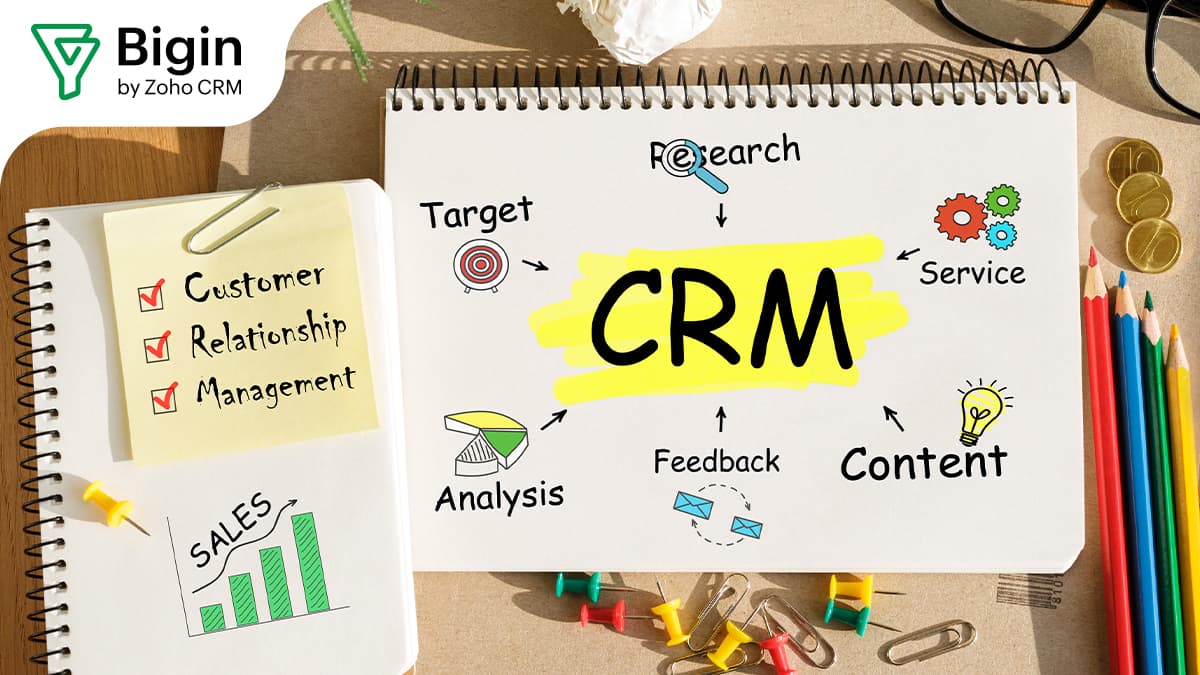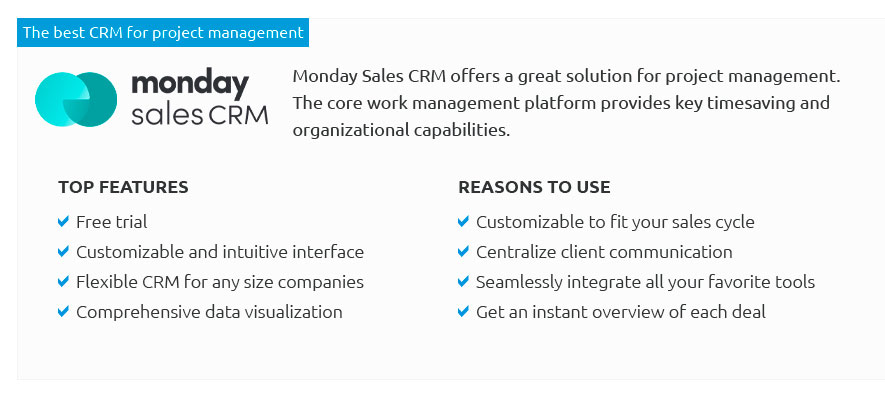
Small Business CRM Setup: Your Ultimate Guide to Choosing, Implementing, and Thriving
So, you’re running a small business? Congratulations! It’s a wild ride, filled with challenges and triumphs. And if you’re reading this, chances are you’re looking to streamline your operations, boost your customer relationships, and ultimately, grow your business. That’s where a Customer Relationship Management (CRM) system comes in. But setting up a CRM for your small business can feel like a daunting task. Fear not! This comprehensive guide will walk you through every step of the process, from choosing the right CRM to implementing it successfully and reaping the rewards.
Why Your Small Business Needs a CRM
Before we dive into the how-to, let’s talk about the why. Why is a CRM so crucial for small businesses? Think of it as the central nervous system for your customer interactions. It’s where you store all your customer data, track your interactions, and manage your sales pipeline. Here’s a breakdown of the key benefits:
- Improved Customer Relationships: A CRM allows you to personalize your interactions with customers. You’ll have a complete view of their history, preferences, and needs, enabling you to provide better service and build stronger relationships.
- Increased Sales: By tracking leads, managing your sales pipeline, and automating tasks, a CRM can significantly boost your sales performance. You’ll be able to identify and nurture leads more effectively, close deals faster, and forecast sales more accurately.
- Enhanced Productivity: CRM systems automate repetitive tasks, such as data entry and email follow-ups, freeing up your team to focus on more strategic initiatives. This leads to increased efficiency and productivity across the board.
- Better Data Analysis: CRM systems provide valuable insights into your customer behavior and sales performance. You can track key metrics, identify trends, and make data-driven decisions to improve your business.
- Centralized Information: No more scattered spreadsheets or lost emails! A CRM centralizes all your customer information in one place, making it easy for your team to access and share data.
Choosing the Right CRM for Your Small Business
Choosing the right CRM is the most critical step in the process. There’s a vast landscape of CRM software out there, each with its own set of features and pricing plans. The key is to find the one that aligns with your specific business needs and budget. Here’s a step-by-step guide to help you choose the perfect CRM:
1. Define Your Needs and Goals
Before you start comparing CRM systems, take some time to define your specific needs and goals. What are you hoping to achieve with a CRM? What are your biggest pain points in managing customer relationships and sales? Consider the following questions:
- What are your primary business goals? (e.g., increase sales, improve customer retention, streamline marketing efforts)
- What are your current challenges in managing customer data? (e.g., data scattered across multiple systems, difficulty tracking leads, lack of personalized communication)
- What features are essential for your business? (e.g., contact management, sales pipeline management, email marketing integration, reporting and analytics)
- How many users will need access to the CRM?
- What is your budget?
Answering these questions will give you a clear understanding of your requirements and help you narrow down your options.
2. Research and Compare CRM Systems
Once you’ve defined your needs, it’s time to research and compare different CRM systems. There are dozens of options available, ranging from simple, affordable solutions to complex, enterprise-level platforms. Here are some popular CRM systems for small businesses:
- Zoho CRM: A feature-rich and affordable CRM with a wide range of integrations.
- HubSpot CRM: A free CRM with powerful marketing and sales tools, ideal for businesses with limited budgets.
- Salesforce Essentials: A simplified version of Salesforce, designed for small businesses.
- Pipedrive: A sales-focused CRM with a user-friendly interface.
- Freshsales: A CRM that is great for sales teams, with built-in features like phone and email.
When comparing CRM systems, consider the following factors:
- Features: Does the CRM offer the features you need, such as contact management, sales pipeline management, email marketing integration, and reporting?
- Ease of use: Is the CRM user-friendly and easy to navigate?
- Integrations: Does the CRM integrate with your existing tools, such as email, accounting software, and marketing automation platforms?
- Pricing: Is the pricing plan affordable and scalable for your business?
- Customer support: Does the vendor offer reliable customer support?
- Scalability: Can the CRM accommodate your business growth?
3. Evaluate and Test
Once you’ve narrowed down your choices, it’s time to evaluate and test the top contenders. Most CRM vendors offer free trials or demos. Take advantage of these opportunities to get a feel for the software and see if it’s a good fit for your business. Here’s what to do:
- Sign up for free trials: Test drive the CRM systems that seem like the best fit for your business.
- Explore the features: Experiment with the different features and see how they work.
- Import your data: Import a sample of your customer data to see how the CRM handles it.
- Test the integrations: Try integrating the CRM with your other tools.
- Get feedback from your team: Involve your team in the testing process and gather their feedback.
4. Make Your Decision
After evaluating and testing the different CRM systems, it’s time to make your decision. Choose the CRM that best meets your needs, budget, and technical capabilities. Consider the long-term implications of your decision and select a CRM that can grow with your business.
Setting Up Your CRM: A Step-by-Step Guide
Now that you’ve chosen your CRM, it’s time to set it up. This process can vary depending on the CRM you choose, but the general steps are the same. Here’s a step-by-step guide to help you set up your CRM successfully:
1. Planning and Preparation
Before you dive into the technical aspects of setting up your CRM, take some time to plan and prepare. This will save you time and headaches down the road. Here’s what you need to do:
- Define your CRM strategy: Determine how you will use the CRM to achieve your business goals.
- Identify your data sources: Where is your customer data currently stored? (e.g., spreadsheets, email, contact lists)
- Clean and organize your data: Ensure your data is accurate, complete, and consistent.
- Assign roles and permissions: Determine who will have access to the CRM and what they will be able to do.
- Set up your team: Get your team on board with the CRM and train them on how to use it.
2. Customization
Most CRM systems offer a high degree of customization. This allows you to tailor the CRM to your specific business needs and workflows. Here are some common customization options:
- Add custom fields: Create custom fields to store data that is specific to your business.
- Customize the sales pipeline: Configure your sales pipeline to match your sales process.
- Create custom reports and dashboards: Generate reports and dashboards that provide insights into your business performance.
- Configure email templates: Create email templates for common communications, such as follow-up emails and newsletters.
- Set up automation rules: Automate repetitive tasks, such as sending emails and updating contact information.
3. Data Import
Importing your data into your CRM is a crucial step. This involves transferring your existing customer data from your current systems (e.g., spreadsheets, email) into your CRM. Here’s how to do it:
- Prepare your data: Format your data in a CSV or Excel file.
- Map your fields: Match the fields in your data file to the fields in your CRM.
- Import your data: Upload your data file to your CRM.
- Review your data: Check for any errors or inconsistencies.
Most CRM systems provide import tools that make this process relatively easy. However, it’s essential to ensure your data is clean and organized before you import it.
4. Integration
Integrating your CRM with your other business tools is essential for maximizing its value. This allows you to streamline your workflows and automate tasks. Here are some common integrations:
- Email: Integrate your CRM with your email provider to track email communications and send email marketing campaigns.
- Marketing automation: Integrate your CRM with your marketing automation platform to automate marketing tasks and nurture leads.
- Accounting software: Integrate your CRM with your accounting software to track sales and manage invoices.
- Social media: Integrate your CRM with your social media accounts to track social media interactions and manage your social media presence.
- Other business tools: Integrate your CRM with other tools you use, such as project management software and customer service platforms.
5. Training and Adoption
Training your team on how to use the CRM is essential for ensuring its successful adoption. Provide your team with comprehensive training and ongoing support. Here’s what to do:
- Provide training: Train your team on how to use the CRM, including its features, workflows, and best practices.
- Create user guides and documentation: Provide your team with user guides and documentation to help them use the CRM effectively.
- Offer ongoing support: Provide ongoing support to your team and answer their questions.
- Encourage adoption: Encourage your team to use the CRM and provide them with feedback and recognition.
Maximizing Your CRM: Best Practices for Small Businesses
Once your CRM is set up and your team is trained, it’s time to start using it to its full potential. Here are some best practices for maximizing the value of your CRM:
1. Keep Your Data Clean and Up-to-Date
Maintaining clean and up-to-date data is crucial for getting the most out of your CRM. Regularly review your data, identify and correct any errors, and update contact information as needed. Consider implementing the following practices:
- Data validation: Use data validation tools to ensure your data is accurate and consistent.
- Data enrichment: Use data enrichment tools to automatically update your contact information.
- Regular data cleansing: Regularly review your data and remove duplicates and outdated information.
2. Use the CRM Consistently
Encourage your team to use the CRM consistently. This includes logging all customer interactions, updating contact information, and tracking leads. The more your team uses the CRM, the more valuable it will become.
3. Leverage Automation
CRM systems offer a wide range of automation features that can save you time and effort. Take advantage of these features to automate repetitive tasks, such as sending emails, updating contact information, and managing your sales pipeline.
4. Track Key Metrics
Track key metrics to measure the performance of your CRM and identify areas for improvement. Track metrics such as sales conversion rates, customer retention rates, and customer satisfaction scores. Use these metrics to make data-driven decisions and improve your business performance.
5. Regularly Review and Optimize
Regularly review your CRM setup and make adjustments as needed. This includes updating your workflows, adding new features, and optimizing your reporting. The more you optimize your CRM, the more value you will get out of it.
Common Challenges and How to Overcome Them
Setting up and using a CRM can come with its own set of challenges. Here are some common challenges and how to overcome them:
1. Data Migration Issues
Migrating data from your existing systems to your CRM can be a complex process. Here’s how to mitigate data migration issues:
- Plan ahead: Plan your data migration process in advance.
- Clean your data: Clean and organize your data before you migrate it.
- Test your migration: Test your data migration process before you migrate all of your data.
- Use a data migration tool: Use a data migration tool to automate the data migration process.
2. User Adoption Challenges
Getting your team to adopt the CRM can be a challenge. Here’s how to improve user adoption:
- Provide training: Provide your team with comprehensive training on how to use the CRM.
- Make it easy to use: Make the CRM user-friendly and easy to navigate.
- Show the benefits: Show your team how the CRM can benefit them.
- Provide ongoing support: Provide your team with ongoing support and answer their questions.
- Encourage adoption: Encourage your team to use the CRM and provide them with feedback and recognition.
3. Integration Problems
Integrating your CRM with your other business tools can sometimes be challenging. Here’s how to overcome integration problems:
- Plan your integrations: Plan your integrations in advance.
- Choose compatible tools: Choose tools that are compatible with your CRM.
- Test your integrations: Test your integrations before you go live.
- Seek help from the vendor: Seek help from the vendor if you encounter any problems.
4. Lack of Customization
If your CRM doesn’t offer the customization options you need, you may struggle to tailor it to your specific business needs. Here’s how to address this:
- Choose a CRM with robust customization options: Select a CRM that offers a wide range of customization options.
- Use custom fields and workflows: Use custom fields and workflows to tailor the CRM to your specific needs.
- Consider a third-party integration: Consider using a third-party integration to add additional functionality to your CRM.
The Long-Term Benefits of a Well-Implemented CRM
The initial investment in time and resources to set up a CRM is well worth it. The long-term benefits for your small business are significant and can lead to sustainable growth and success. Here are some of the key advantages:
- Improved Customer Loyalty: By providing personalized service and building stronger relationships, you can foster customer loyalty and reduce churn. Loyal customers are more likely to make repeat purchases and recommend your business to others.
- Increased Revenue and Profitability: A CRM helps you optimize your sales process, identify and nurture leads, and close deals faster. This leads to increased revenue and improved profitability.
- Enhanced Brand Reputation: By providing excellent customer service and building strong relationships, you can enhance your brand reputation and attract new customers.
- Data-Driven Decision Making: A CRM provides valuable insights into your customer behavior and sales performance, allowing you to make data-driven decisions and improve your business performance.
- Scalability and Growth: A well-implemented CRM can scale with your business, allowing you to manage your customer relationships and sales processes as your business grows.
Conclusion: Embrace the Power of CRM for Your Small Business
Setting up a CRM for your small business is a smart investment that can transform your customer relationships, boost your sales, and streamline your operations. By following the steps outlined in this guide, you can choose the right CRM, implement it successfully, and reap the rewards. Don’t be intimidated by the process. Take it one step at a time, and you’ll be well on your way to building a thriving business.
Remember to focus on your specific needs, choose a CRM that aligns with your goals, and train your team on how to use it effectively. With a well-implemented CRM, you’ll be able to build stronger customer relationships, increase your sales, and achieve long-term success. So, take the plunge and embrace the power of CRM for your small business!


